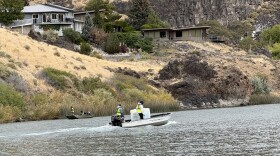-
The Idaho Department of Agriculture says it wants to rid the river of invasive mussels for good, which hasn't been done before in a river system.
-
Quagga mussels are still present in the Snake River after two years of aggressive treatment.
-
Hells Canyon is the deepest river canyon in the United States. Now scientists have solved the mystery of when it formed.
-
The little town of Robinette was flourishing, nestled in eastern Oregon by the Snake River. Then one day, the town was gone, wiped off the map and drowned under a reservoir.
-
On Monday, the Idaho State Department of Agriculture (ISDA) began treating several ponds in the Snake River with potash, which is used to exterminate quagga mussels.
-
Average salmon and steelhead counts in the Columbia River Basin over the last decade are still well below officials’ goal of five million fish per year.
-
Idaho State Department of Agriculture has found juvenile quagga mussels once again in the Twin Falls area – though at lower levels prior to chemically treating 16 miles of the Snake River last year.
-
Conservationists want to save two small snails to help protect rivers in the West.
-
One estimate says a quagga mussel infestation would cost the Pacific Northwest $500 million a year to deal with.
-
The Interior Department is spending another $70 million to reopen habitat for native fish in many parts of the U.S., including the Mountain West.

Play Live Radio
Next Up:
0:00
0:00
Available On Air Stations










